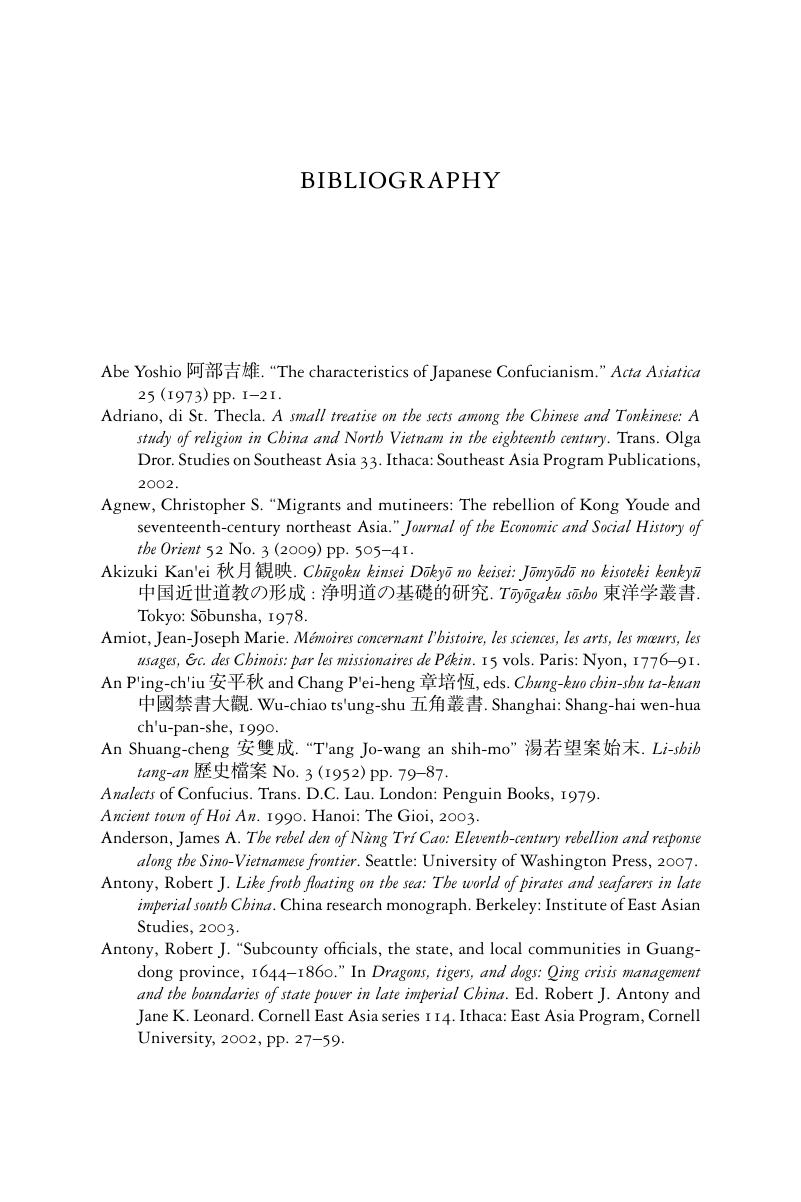Book contents
- The Cambridge History of China
- Additional material
- Copyright page
- Contents
- Figures and Tables
- Maps
- Preface
- Ch′ing dynasty rulers to 1850
- Introduction: The Ch′ing dynasty, the Ch′ing empire, and the Great Ch′ing integrated domain
- Chapter 1 Governing provinces
- Chapter 2 Taiwan prefecture in the eighteenth century
- Chapter 3 The Extension of Ch′ing rule over Mongolia, Sinkiang, and Tibet, 1636–1800
- Chapter 4 Tributary relations between the Chosǒn and Ch′ing courts to 1800
- Chapter 5 The emergence of the state of Vietnam
- Chapter 6 Cultural transfers between Tokugawa Japan and Ch′ing China to 1800
- Chapter 7 Ch′ing relations with maritime Europeans
- Chapter 8 Catholic missionaries, 1644–1800
- Chapter 9 Calendrical learning and medicine, 1600–1800
- Chapter 10 Taoists, 1644–1850
- Chapter 11 Arguments over learning based on intuitive knowing in early Ch′ing
- Chapter 12 Advancement of learning in early Ch′ing: Three cases
- Chapter 13 Dominating learning from above during the K′ang-hsi period
- Chapter 14 Political pressures on the cultural sphere in the Ch′ing period
- Chapter 15 Changing roles of local elites from the 1720s to the 1830s
- Bibliography
- Glossary–Index
- References
Bibliography
Published online by Cambridge University Press: 05 April 2016
- The Cambridge History of China
- Additional material
- Copyright page
- Contents
- Figures and Tables
- Maps
- Preface
- Ch′ing dynasty rulers to 1850
- Introduction: The Ch′ing dynasty, the Ch′ing empire, and the Great Ch′ing integrated domain
- Chapter 1 Governing provinces
- Chapter 2 Taiwan prefecture in the eighteenth century
- Chapter 3 The Extension of Ch′ing rule over Mongolia, Sinkiang, and Tibet, 1636–1800
- Chapter 4 Tributary relations between the Chosǒn and Ch′ing courts to 1800
- Chapter 5 The emergence of the state of Vietnam
- Chapter 6 Cultural transfers between Tokugawa Japan and Ch′ing China to 1800
- Chapter 7 Ch′ing relations with maritime Europeans
- Chapter 8 Catholic missionaries, 1644–1800
- Chapter 9 Calendrical learning and medicine, 1600–1800
- Chapter 10 Taoists, 1644–1850
- Chapter 11 Arguments over learning based on intuitive knowing in early Ch′ing
- Chapter 12 Advancement of learning in early Ch′ing: Three cases
- Chapter 13 Dominating learning from above during the K′ang-hsi period
- Chapter 14 Political pressures on the cultural sphere in the Ch′ing period
- Chapter 15 Changing roles of local elites from the 1720s to the 1830s
- Bibliography
- Glossary–Index
- References
Summary

- Type
- Chapter
- Information
- The Cambridge History of China , pp. 701 - 779Publisher: Cambridge University PressPrint publication year: 2016



